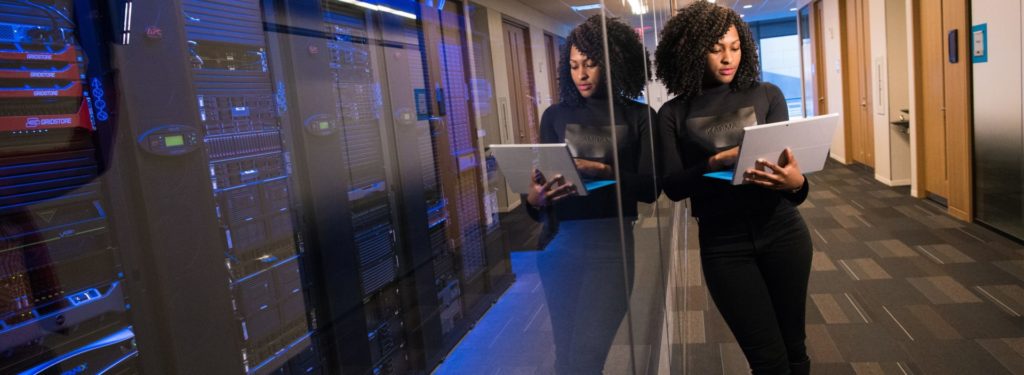If you would like to read the other parts in this article series please go to:
- Getting Started with AWS (Part 1)
- Getting Started with AWS (Part 2)
- Getting Started with AWS (Part 3)
- Getting Started with AWS (Part 4)
- Getting Started with AWS (Part 5)
- Getting Started with AWS (Part 6)
- Getting Started with AWS (Part 7)
- Getting Started with AWS (Part 8)
- Getting Started with AWS (Part 9)
- Getting Started with AWS (Part 10)
- Getting Started with AWS (Part 11)
- Getting Started with AWS (Part 12)
- Getting Started with AWS (Part 13)
Introduction
Now that you’ve learned some of the basics of how to set up, manage, secure and audit an AWS environment, where should you go from here? This, the final article in this short “Getting Started” series, is intended to answer just that question by providing you with links to some additional resources you can use to learn more about AWS, how you can use it, and what you can do with it.
TechGenix articles
Probably the best place you can learn more about AWS is right here on InsideAWS.com which is one of the TechGenix family of sites for IT professionals. The number of articles on InsideAWS.com is growing rapidly and they cover everything from basic architecture to management, security, storage, workflow and even development. Some of my favorite articles on this site (besides this series) include the following:
The series A Crash Course in Amazon Terminology by Brien M. Posey is an excellent overview of the basic concepts and terminology used by AWS and is helpful for IT professionals who come from a different cloud computing background like Microsoft Azure or Google Cloud Platform.
The series Microsoft + AWS: A Winning Combo by Deb Shinder (series) provides a high-level overview of how you can deploy various Microsoft workloads in an AWS cloud environment including Microsoft Exchange Server and Microsoft SharePoint Server.
The series Improve IT Governance with AWS by Ricky M. & Monique L. Magalhaes helpfully examines various governance features proposed by AWS to assist organizations in achieving a higher level of governance over IT resources and is a valuable resource for any organization concerned about legal and compliance issues associated with implementing a cloud computing solution.
The series Importing a Virtual Machine into Amazon EC2 by Brien M. Posey walks you through the steps involved in migrating your on-premises virtual machines into an Amazon AWS Elastic Compute Cloud (Amazon EC2) environment.
The series Security Best Practices for AWS (IaaS) EC2 by Ricky M. & Monique L. Magalhaes describes some additional steps you can take to improve the security of your Amazon EC2 environment.
The series Doing your Database on AWS by Deb Shinder looks at deploying and managing a database in the AWS.
Be sure to check back with InsideAWS.com frequently for additional articles in the above series and also for single- and multi-part articles on new AWS topics.
AWS tutorials
The Amazon AWS documentation site also has a collection of tutorials designed to help you gain some hands-on experience working with AWS services like Amazon EC2 which lets you run virtual machines in the cloud, Amazon Simple Storage Service (Amazon S3) which provides Web Service based storage for building simple static web sites and for many other uses, AWS Elastic Beanstalk which allows you to deploy and manage dynamic web applications in the cloud, Amazon Glacier which lets you store archival data in the cloud, Amazon Redshift for building a data warehouse solution in the cloud, and so on. At the time of writing this article, the list of tasks you can learn how to perform using these tutorials includes:
- Running a virtual server (Linux or Windows) in Amazon EC2
- Storing files using Amazon S3 and Amazon Glacier
- Deploying a website (static or dynamic) using Amazon S3 and AWS Elastic Beanstalk
- Hosting a website (Linux or Windows) such as a WordPress blog or .NET application or Drupal
- Running a database using Amazon DynamoDB, Amazon RDS, or Amazon Redshift
- Analyzing your data using Amazon EMR or AWS Data Pipeline
- Sharing digital media using Amazon S3, Amazon CloudFront, and other AWS services
You can find links to the various tutorials available on this page in the AWS Documentation site.
AWS videos
AWS has published a number of videos on their YouTube channel that include webinars, conference events, case studies, and video resources for training and certification. Some of the more popular videos include:
- AWS Platform Overview
- Introduction to Amazon Web Services
- What is Cloud Computing?
- How to Launch a Website in 10 Minutes
- Introduction to Amazon Redshift
- Getting Started with Amazon Glacier
AWS self-paced labs
As described earlier in Part 1 of this series, Amazon makes it easy for you to try out AWS by offering everyone a free usage tier that lets you test drive 18 different products and services at no charge for a period of 12 months. But there’s another way you can gain some hands-on experience with different AWS services and that’s by using Amazon’s self-paced labs. These labs allow you to learn various skills at your own pace and provide a safe environment for you to explore and test-drive various AWS services like Amazon EC2, Amazon Redshift, Amazon Virtual Private Cloud (Amazon VPC) and more. You can work through a series of labs by choosing a service area like Compute & Networking or by focusing on a use case like Websites & Web Apps, and you can start as a Beginner or jump into more complex labs as an Experienced user.
AWC Certification
As you progress in your learning of AWS skills, you may consider going for certification in AWS proficiency. Achieving an AWS Certification allows you to demonstrate to prospective employers that you possess AWS cloud computing skills and can help increase your visibility and recognition in your profession. Some of the available certifications you can currently pursue include:
- AWS Certified SysOps Administrator
- AWS Certified Solutions Architect
- AWS Certified Developer
- AWS Certified DevOps Engineer
For more information on AWS training and certification options you can download and read this PDF overview document.
Keeping up
Like any cloud computing platform, Amazon AWS continues to evolve through the introduction of new features and capabilities businesses can use to leverage the benefits of the cloud. There are a couple of ways you can keep up with the latest developments in AWS:
The What’s New from Amazon Web Services page has various lists of the most recent announcements from AWS in different AWS service areas.
The AWS Official Blog provides valuable information about new capabilities, best practices, troubleshooting tips, and more. There are also links on this page for other AWS blogs on topics like architecture, security, and application development in various platforms including PHP, .NET, Ruby, Java, and mobile applications.
Getting help
Finally, if you’re trying to learn how to use a certain AWS service and are having difficulties, you can post your questions to an appropriate forum on the AWS Discussion Forums. Some of the forums are very active and you’ll likely quickly get the help you need from your peers.
If you would like to read the other parts in this article series please go to:
- Getting Started with AWS (Part 1)
- Getting Started with AWS (Part 2)
- Getting Started with AWS (Part 3)
- Getting Started with AWS (Part 4)
- Getting Started with AWS (Part 5)
- Getting Started with AWS (Part 6)
- Getting Started with AWS (Part 7)
- Getting Started with AWS (Part 8)
- Getting Started with AWS (Part 9)
- Getting Started with AWS (Part 10)
- Getting Started with AWS (Part 11)
- Getting Started with AWS (Part 12)
- Getting Started with AWS (Part 13)




Thanks for sharing these tutorials on AWS , they are quite helpful for students and new developers who want to get a better understanding with using Amazon Web Services. The certifications mentioned here are quite important for starting a career in the AWS Cloud field.